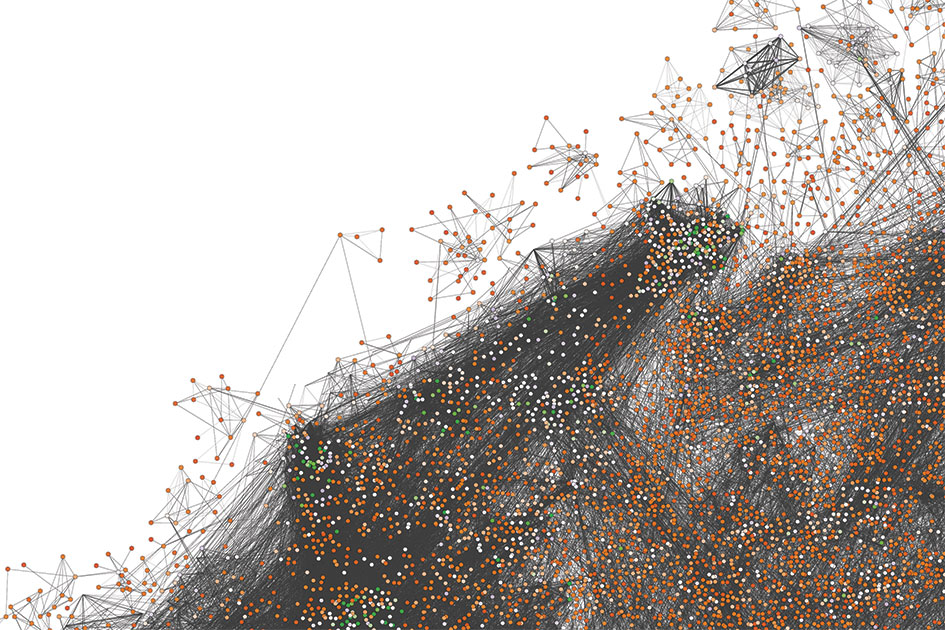Inventing the Future
A look into Sociology 380: Networks and Social Structure
What drives scientific innovation? According to Prof. Kjersten Whittington [sociology 2007–], a key factor is collaboration.
This graph, drawn from 783,835 biotechnology patents from 1976 to 2005, depicts the activity of 215,450 global inventors. Each dot (or node) is an inventor. Connecting them are lines that represent who has invented with whom. Students in Prof. Whittington’s Sociology 380: Networks and Social Structure course learn to analyze large data sets like this one, which she compiled and used for a recent paper, “A Tie Is a Tie? Gender and Network Positioning in Life Science Inventor Collaboration.” The complete data set is shown in the spherical image above; to the right, an enlarged area shows a portion of the network in detail.
A network approach captures underlying patterns of activity and can deepen our understanding of how relationships among scientists influence innovation. A scientist’s degree of “embeddedness” in the network—i.e., the extent to which they occupy a central position in collaborative space-—is a potent predictor of future innovation, Whittington finds, especially when an inventor brings together communities of scientists who are otherwise unconnected. She also turns an eye towards the positioning of women scientists in this network, compared to men, to help researchers solve problems of gender inequity in scientific fields.
Tags: Academics, Campus Life, Object of Study, Professors
